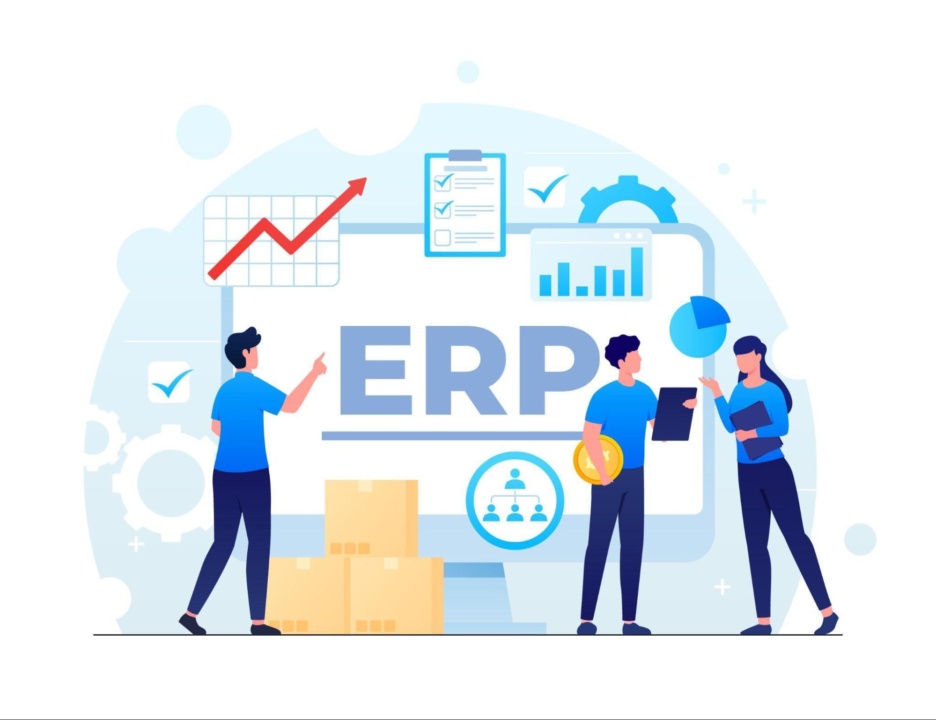Challenges Businesses Face with Outdated Processes
Effective management of accounts receivable is essential for a company’s financial health. However, numerous businesses still encounter difficulties because of outdated procedures, manual tracking systems, and delayed payments. These challenges can disrupt cash flow and create operational bottlenecks, affecting daily operations and limiting the company’s ability to grow while sustaining strong customer relationships.
Automation and Efficiency Through ERP
Enterprise Resource Planning (ERP) systems play a vital role in revolutionizing the management of accounts receivable for businesses. By implementing ERP, companies can automate tasks more efficiently, access real-time insights, and unify all financial data on one platform. This integration not only boosts operational efficiency but also fosters better decision-making, enhances cash flow predictability, and ensures compliance with financial regulations.
So what is ERP, exactly? It is a transformative tool that can revolutionize your financial processes and drive corporate success; it is more than just software. To increase productivity and growth, think about investing in ERP integration if your accounts receivable procedure is impeding your progress. Why is it essential to optimize your accounts receivable process? Let’s delve into its function and benefits in transforming financial workflows further.
ERP Explained: The Key to Streamlined Business Operations
Enterprise Resource Planning (ERP) is an all-encompassing software platform designed to merge essential business operations into one cohesive system. This integration usually covers areas such as finance, human resources, inventory management, supply chain management, and customer relationship management (CRM).
ERP systems are designed to centralize data, automate workflows, and deliver actionable insights via real-time reporting. Implementing an ERP system allows businesses to eliminate data silos, enhance collaboration, and make informed decisions.
When utilized in financial functions, ERP significantly transforms processes, particularly in managing accounts receivable.
Benefits of ERP Integration in Accounts Receivable
Centralized Data for Better Visibility
ERP systems combine financial data into a single platform, giving a comprehensive overview of client accounts, outstanding invoices, and payment history. By removing the need to switch between multiple spreadsheets or platforms, this unified method saves time and minimizes errors.
For instance, the ERP system enables the accounts receivable staff to promptly retrieve all pertinent information, including order details and terms of payment, in the event that a customer files a complaint over an invoice. This increases client happiness and encourages prompt resolution.
Automated Invoicing and Payment Processing
One of the key advantages of integrating an ERP system is automation. ERP can automate tasks like creating, distributing, and tracking bills. This guarantees timely billing, speeds up payment processing, and lowers human error.
ERP systems can also integrate with payment gateways, providing customers with a variety of useful payment options like credit cards, ACH payments, and internet transfers. This flexibility enhances payment promptness and decreases the number of days sales remain outstanding.
Improved Cash Flow Management
By leveraging real-time data on accounts receivable, businesses can enhance their cash flow forecasting and make better plans for future expenditures. ERP systems offer comprehensive reports and analytics that help companies spot high-risk customers or see trends like consistently late payments.
By applying this information, accounts receivable staff may proactively handle payment delays and work out beneficial agreements with clients. This increases liquidity and ensures financial stability.
Enhanced Compliance and Reporting
Organizations place a high value on following financial regulations, particularly those in regulated industries. ERP systems contribute to compliance by facilitating accurate record-keeping and producing data that is audit-ready.
ERP systems also make tax computations and regulatory reporting easier, reducing the possibility of fines and increasing financial operations’ transparency.
Integration with CRM for Better Customer Relations
The integration of ERP systems with CRM solutions is often seamless, offering a thorough understanding of customer interactions. Through this integration, accounts receivable teams may customize their follow-ups and communications, fostering stronger bonds.
For instance, in order to improve trust and loyalty, the accounts receivable team can use ERP data to offer customized payment choices to a devoted customer who is experiencing a brief cash flow issue.
Scalability and Flexibility
The management of accounts receivable procedures gets more complex as firms grow. ERP systems’ strong scalability allows companies to manage growing transaction volumes.
Whether you’re introducing new products or entering new markets, an ERP system ensures that your accounts receivable processes stay adaptable and versatile.

Key Features of ERP Systems for Accounts Receivable
- Invoice Automation: Automatic generation and delivery of invoices.
- Payment Tracking: Real-time updates on payment statuses and due dates.
- Credit Management: Tools to assess customer creditworthiness and set credit limits.
- Reporting and Analytics: Customizable dashboards to monitor AR metrics like DSO and collection rates.
- Integration Capabilities: Seamless connection with CRM, payment gateways, and other financial tools.
- Mobile Access: Accessibility from smartphones and tablets for on-the-go updates.
How to Implement ERP for Accounts Receivable
Assess Your Needs
Evaluate your current accounts receivable procedure first. Identify problems such as manual inefficiencies, data silos, or late payments. Set specific goals for ERP integration, including improving cash flow forecasting or lowering days sales outstanding (DSO).
Choose the Right ERP System
Select an ERP system based on your budget and business needs. Prominent ERP solutions with dedicated modules for accounts receivable management include SAP, Oracle NetSuite, and Microsoft Dynamics.
Plan the Integration Process
Plan the integration procedure along with a specialized implementation team. This includes educating staff members on the new platform, establishing AR workflows, and moving data from legacy systems.
Test and Monitor
Conduct thorough testing prior to launch in order to identify any problems or functional gaps. Once the system is operational, monitor performance indicators and collect user input for continuous improvement.
Emily Henry writes for UKWritings Reviews and Write My Research Paper. She writes articles on many subjects including writing great resumes. Emily is also an editor at State Of Writing.




![‘Jay Kelly’ Review – Noah Baumbach Makes A Case For The Magic Of Movie Stardom [NYFF 2025] ‘Jay Kelly’ Review – Noah Baumbach Makes A Case For The Magic Of Movie Stardom [NYFF 2025]](https://cdn.geekvibesnation.com/wp-media-folder-geek-vibes-nation/wp-content/uploads/2025/11/Jay-Kelly-JKELLY_20240523_15320_C2_R-300x180.jpg)

